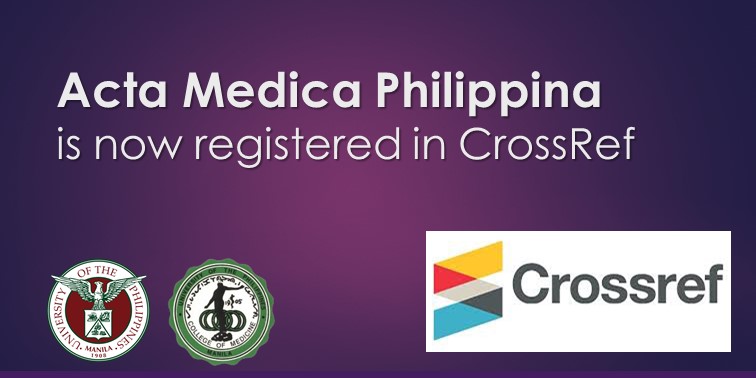Clinical Profile and Outcomes of Patients with Chronic Kidney Disease on Chronic Hemodialysis Hospitalized for Acute Coronary Syndrome in a Tertiary Public Hospital in the Philippines
DOI:
https://doi.org/10.47895/amp.vi0.12145Keywords:
end-stage renal disease, chronic kidney disease, acute coronary syndrome, myocardial infarctionAbstract
Introduction. Acute coronary syndrome (ACS) and end-stage renal disease (ESRD) are both prevalent globally. The diagnosis and management of ACS in ESRD is difficult because the interplay of cardiovascular and renal disease is complicated. The guidelines for ACS may not be applicable to the ESRD population because the trials from which these are drawn mostly excluded ESRD patients.
Objective. To determine the clinical profile and outcomes of CKD patients on dialysis admitted for ACS in the Philippine General Hospital (PGH).
Methods. We did a retrospective cohort study and employed a retrospective review of electronic medical records among ESRD patients presenting with ACS in PGH from May 2021 to November 2023. The collected data was analyzed using univariate and bivariate statistics using PRISM software.
Results. A total of 48 patients with ESRD were admitted for ACS in this study – 8 with STEMI and 40 with NSTEMI. The mean age was 61 years old and 33 (68.8%) were male. Among those with STEMI, six (75%) presented with Kilip II or more. While among those with NSTEMI, 17 (42.5%) had a GRACE score >140 and 27 (67.5%) had an NSTEMI TIMI risk score >2. On average, the patients were on hemodialysis for 31 months prior to admission. The most common comorbidities were hypertension (91.7%) and heart failure (83.3%). On admission, 18 (37.5%) presented with SBP >160, 7 (14.6%) patients presented with shock, and 4 (8.3%) patients presented with cardiac arrest. 38 (79.2%) patients had anemia on admission. 21 (43.8%) patients had left ventricular hypertrophy on electrocardiogram while 34 (70.8%) patients had cardiomegaly on chest radiography. The average left ventricular ejection fraction on echocardiogram was 46% and 27 (90%) patients had segmental wall motion abnormalities. The most common angiographic finding was 3-vessel coronary artery disease seen in 50% of patients. Almost all patients received dualantiplatelet therapy, high dose statin, and beta-blocker. The mortality rate was high at 43.8% with cardiovascular causes being the most common cause of death.
Conclusion. This study demonstrates the high mortality rate among patients with ESRD presenting with ACS. Our study portrays that patients with ESRD present with higher risk features including abnormalities in vital signs, laboratories, imaging, high prognostications score, and high in-hospital morbidity.
Downloads
Published
Issue
Section
License
Copyright (c) 2025 Acta Medica Philippina

This work is licensed under a Creative Commons Attribution-NonCommercial-NoDerivatives 4.0 International License.




.jpg)



